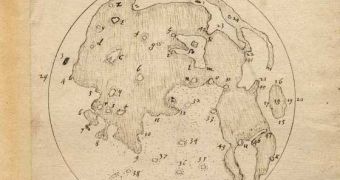Although generally credited as the father of astronomy, and one of the earliest observers of celestial bodies outside our planet, Galileo was not the first to observe and sketch a map of the Moon, as many believe. Rather, an Englishman, Thomas Harriot, drew the first map of portions of our natural satellite as far back as July 1609, a few months earlier than the famed Italian astronomer.
University of Oxford historian Allan Chapman brought forth documents that certify the fact that Harriot was the first one ever to detail the surface of the Moon in drawings, following careful observations via an early telescope. Chapman will publish his finds in the February 2009 issue of the journal Astronomy and Geophysics, which belongs to the Royal Astronomical Society.
The historian said that the early astronomer never published his documents, mainly because of the fact that he was living in relative wealth and had an entire mansion just for himself. Chapman also said that Galileo was under extreme financial pressure at the time, which would have forced him to try to "make it" as a scientist. And while Harriot simply bought a telescope, or had one ordered, Galileo, knowing the principles of optics, built a more inexpensive model for himself.
"Thomas Harriot is an unsung hero of science. His drawings mark the beginning of the era of modern astronomy we now live in, where telescopes large and small give us extraordinary information about the universe we inhabit," Chapman said.
"As an astrophysicist of the 21st century, I can only look back and marvel at the work of 17th century astronomers like Thomas Harriot. The world is right to celebrate Galileo in the International Year of Astronomy – but Harriot shouldn't be forgotten!" added Royal Astronomical Society president, Professor Andy Fabian.
In addition to observing the Moon, Galileo also identified 4 moons around Jupiter, observed and cataloged sunspots, and discovered that the Milky Way was a galaxy made of millions of different stars. The year 2009 has been named the International Year of Astronomy in honor of the fact that 400 years have passed since the earliest observations of the skies via telescope.

 14 DAY TRIAL //
14 DAY TRIAL //